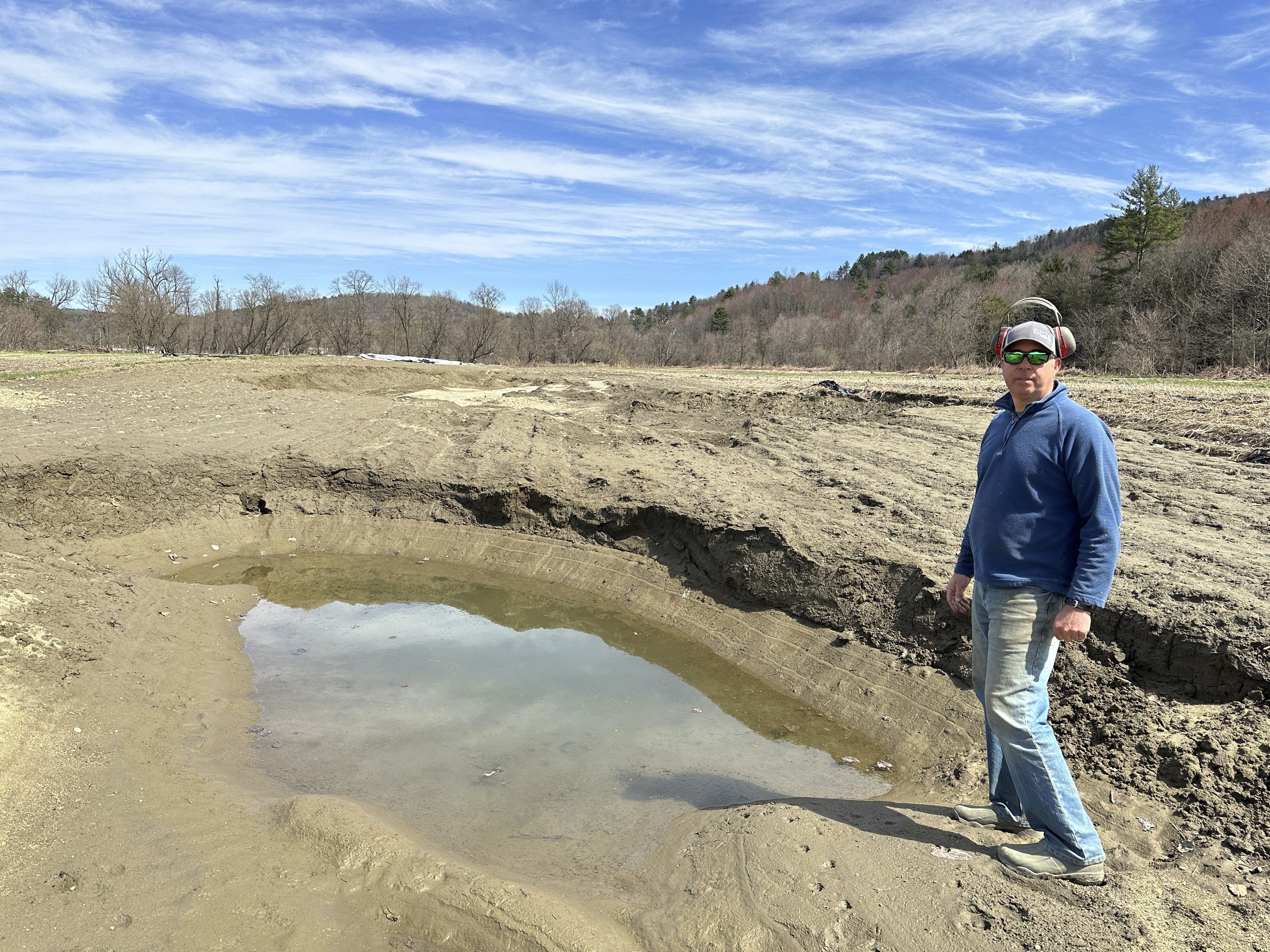The Vermont Statehouse, built in the 1850s, is getting new attention from contractors working to improve the historic structure's energy efficiency. A $21,000 project, paid for through the State Resource Management Revolving Fund, is now underway to address the leakage of air that escapes through the Statehouse's attic.
"It'll be more comfortable," predicted Malcolm Gray of Montpelier Construction, whose team is doing the winterization work. "We've reduced the air leakage by roughly 10 percent."
Tuesday, contractors were corking small gaps between light fixtures and the ceiling of the Vermont House of Representatives chamber, using a plug that wraps around the light fixtures to form a tight seal with the ceiling. Doing so should block the bleed of cool air in the summer and warm air in the winter, Gray said. "If you add all those holes up, you get [the equivalent air leakage of] an open doorway. Maybe two open doorways," he explained. "This will address that."
The next step is to spread loose insulation on the floor of the attic to prevent warm air from lower levels from rising and escaping to the sky, Gray added.
"It really is significant," said Rep. Mary Hooper, D-Montpelier, who sits on the House committee that oversees Vermont's public buildings. "We should be looking for every way we can to conserve our energy, save money, clearly, and lighten our impact on the environment."
Hooper said the state spends $4-6 million a year on heating all its buildings, depending on fuel prices. In the Statehouse alone, the new winterization work is expected to trim $2,000 or more off state bills, according to state buildings staff and contractors.
The cost of the work should be paid back in 10 years through energy savings, estimated Dan Edson, the energy manager for Vermont's Department of Buildings and General Services. Edson noted his estimate of that pay-back period was conservative.
Vermont
The latest news from around the state
"This is tricky work," said Tricia Harper, an architect and project manager with the Vermont Department of Buildings and General Services.
Harper explained cleaning the attic was a chore, as was improving walkways up in the tight space to allow for the work to start. Plus, she said there are changes in surface heights in the attic to contend with. The Statehouse's status as a historic landmark and icon of Vermont also added urgency that the work be done carefully, Harper noted.
"We had a lot of concerns about insulating a historic structure; about what it will do to the masonry, what it will do to the roof--so we're being very careful and conservative," Harper told New England Cable News. "Being a historic structure, we wanted to make sure to use a system that could be reverted, or taken out, if a better system is developed in the future."
Jim Merriam, the executive director of Efficiency Vermont, the statewide utility aimed at reducing energy consumption, told NECN that the job could also be a role model for other historic buildings or homes. "No matter how old your house is, there's actually an opportunity for you to be able to save," Merriam said. "If this can be done at the Statehouse, it can be done at your house."
There are other efficiency projects in the pipeline at the statehouse, including the installation of LED lights to reduce electricity consumption, Edson said. There are even more projects in the works for other state buildings, Harper added, to button up for this winter and all the winters to come.
For more on energy efficiency for homes or businesses, visit the website of Efficiency Vermont.



